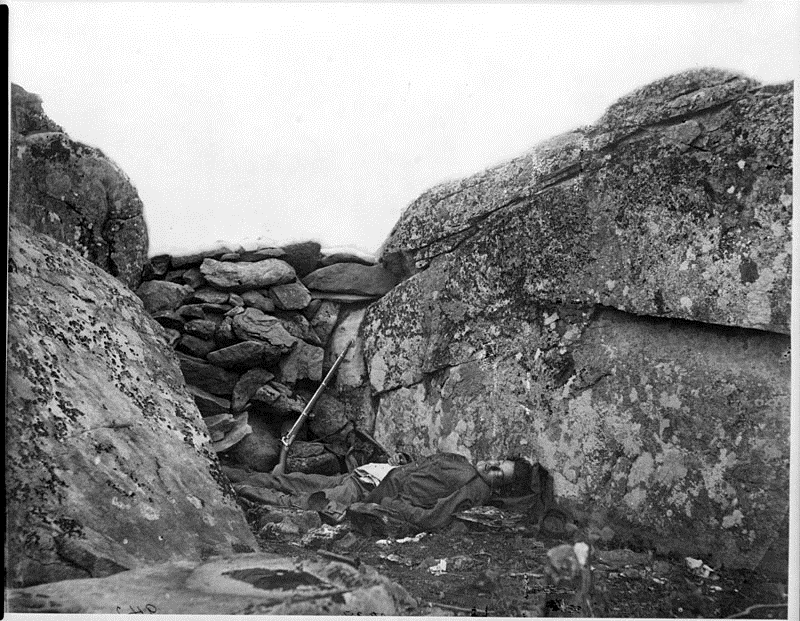Is Seeing Believing? Resources for Teaching About the Manipulation of Photographic Images
©2006 Frank Baker
 Civil War Civil War |
 Stalin Stalin |
 Magazines Magazines |
NEW
- The Kate Middleton Photo Controversy
- Facetuning and Photoshop Isn’t New
- What Happens When Photoshop Goes Too Far? (PBS)
- Infamously Altered Photos: Before & After Their Edits
KEY QUOTES
“Any media that employ digitally doctored photographs will have a stronger effect than merely influencing our opinion — by tampering with our malleable memory, they may ultimately change the way we recall history,” University of Padua researcher Dario Sacchi– upon release of a study on how people’s recollection of historical events is affected by digitally altered news images.
INTRODUCTION
Note to educators: “Is Seeing Believing?” is the title of a curriculum I discovered at the Newseum, a museum of news in Washington DC.
It deals with the manipulation of photographic images in news, history, and culture. I became fascinated by this topic, so I devoted this web site to it.
Throughout history the photograph has been manipulated for various purposes. It is important for students to understand those purposes and to learn how to question images they find in media and on the Internet.
Here you will find a number of contemporary examples of the “digital manipulation of images” as well as links to articles about the ethics and the issue.
A good starting point for students might be the handout “Key Questions,” which helps them use critical thinking skills as they analyze the images.
Let me know what you think of this resource. fbaker1346@aol.com
NOTE: Special thanks to Theresa Redmond, Visual Arts educator (Peoples Academy Middle Level in Morrisville VT) for sharing her Webquest and Powerpoint on this topic.
![]() Current recommended articles/resources:
Current recommended articles/resources:
- Famous Photos That Were Also Mired in Photoshop Controversy
- Altered Images: 150 Years of Photographic History
- Adobe Doesn’t Think ‘Photoshop’ Is a Dirty Word
- Study Proves We Still Need to Talk About Photoshop
- The Art & Science of Retouching: What Really Happens To Photos
- The Amazing World of Photo Editing Before Photoshop
- What Did We Do Before Photoshop?
- Is Social Media Making Us Suckers? From Images to Hoaxes, What’s Real?
- Manipulating photos in a pre-Photoshop World/ “Faking It: Manipulated Photography Before Photoshop”
- Before Photoshop: How Photos Have Been Manipulated For Years
- The World’s First Faked Photo
- Startup Reveals If A Photo Is Fake
- Photo retoucher exposes how models REALLY get airbrushed
- Detecting the Truth in Photos
- The Lash Stand: Will new attitudes and regulatory oversight hit delete on some photo retouching in print ads?
- Newspaper Raises Eyebrows With Composite Photo on Page One
- Digitally altered images: famous pictures that have been manipulated using Photoshop
- North Korea not the only offender: 6 official photo fudgings
- Photoshop catastrophes: 2011 The year in review
- Photoshopped or Not? A Tool to Tell / Retouched or not: tool spots photos’ too-flawless features
- Great Fakes – Famous Doctored Photographs
- How Civil War Photography Changed War
- Digital Manipulation in the Fashion Industry
- Altered, and out
- How we learned to love Photoshop
- Point, Shoot, Retouch and Label?
- The Case of The Inappropriate Alarm Clock Part 1; 2 ; 3; 4 ; 5; 6; 7
- Looking at the truth of a photo
- A Move to Curb Digitally Altered Photos in Ads
- Seeing is not believing: Doctoring digital photos is easy. Detecting it can be hard.
- Digital Photo Disasters In Ads & News
- Microsoft Edits Black Man Out of Photo
- Faked photos: Look, and then look again/ A Brief History of Photo Fakery
- Photoshop disasters may be banned in UK
- Photoshopped images: the good, the bad and the ugly
- New York Times Magazine Withdraws Altered Photo Essay/ Behind The Scenes: Digital Manipulation
- Ethics in the age of digital manipulation
- News Photos that took airbrushing too far
- Is Seeing Believing in an Age of Digital Photos?
- No Airbrushing Is the New All Black
- Photoshop for Democracy Revisited: The Sarah Palin File
- Photo Touch-Ups the New Reality
- Detecting Digital Photo Fakery What’s Real? Learning to Tell Truth From Fiction in The Photoshop Age (PC World, Aug 2008)
- Digital Forensics: How Experts Uncover Doctored Images/
- Five Ways to Spot A Fake Photo /Photo Tampering Throughout History (Scientific American)
- In A Photoshop Age, Can You Believe Your Eyes? (NPR)
- Believing Is Seeing (July 2008, The New York Times)
- Scientific American: Digital Forensics, Doctored Photos, and Paula Abdul
- (slide show)
- Faked tiger photo sparks Web furor
- Pixel Perfect (The New Yorker)
- Picture Perfect: Has Airbrushing Gone Too Far? (Newsweek)
- Pixel perfect: Why you shouldn’t believe your eyes when it comes to those glossy images
- Lesson Plan: Digital Image Manipulation in the Mass Media
- Questions Raised About Darkening of Obama in Hillary Ad
- Researchers look to spot photo hoaxes
- Say ‘Cheese!’ And Now Say ‘Airbrush!’ (Newsweek)
- Is that really true: urban legends & info eval skills (Jan/Feb 08)
- Pictures can lie…so can memory (Nov. 2007)
- Digital detectives discern Photoshop fakery (CSM, Aug 2007)
- Real or not real: The digital game (Media Ethics Magazine)
- Distorted Picture (American Journalism Review)
- I See, I Do: Persuasive Messages and Visual Literacy (see also: Pictures That Lie)
- 3 Magazines Are Accused of Retouching Celebrity Photos to Excess (May 2007)
- Digital Image Manipulation: A Compelling Means to Engage Students in Discussion of Point of View and Perspective (2006)
- Iowa-tied hoax typifies trickery of Web videos
- The Art of Image Altering
- CBS Photoshops Incoming News anchor Katie Couric
- Seeing Is No Longer Believing
- Photo Fakery: Identifying Falsified Images
- Seeing Isn’t Believing: When pictures become propaganda Reader’s Digest, September 2004
- Digital imaging zaps braces, zits from yearbook photos
- Digital alteration throughout history
- Hoax or Real Photo Quiz
Take the Fake or Photo Challenge
Share This Page:


